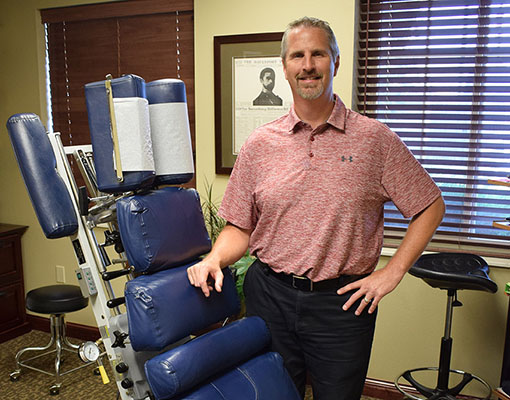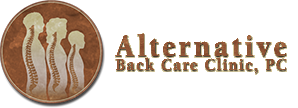Causes and Treatments
Lower Back Pain
LOW BACK

Approximately 80% of adults will suffer low back pain during their lives, but only 14% will have pain that lasts longer than 2 weeks. Research has shown that roughly 52% of all adults have disc bulges but don’t have pain. About 39% of people with low back pain are due to disc disruptions. Following are some conditions that lead to low back pain.
LUMBAR DISC INVOLVEMENT

When looking at a disc from a birds-eye view, it resembles a tree trunk that has been cut. The center (nucleus) is surrounded by rings (annulus). The discs are the “shock absorbers” of the spine between he vertebrae. The annulus (rings) can tear leading to and inflamed disc and pain. If these tears become too large, the nucleus (center) can begin to leak through these rings and push the edge outwards. This is called a bulged disc. Please keep in mind that these descriptions vary from different texts and can be confusing. When the tear occurs in the outer ring, the nucleus can leak out of the disc and is now considered a disc herniation. The nucleus that has leaked out can become pinched off and become a free-floating segment called a sequestered disc.
When a patient presents to the office, a thorough exam is performed to decipher whether a disc involvement exists and if so, to what degree. In our office we deal with disc problems and treat them with spinal manipulation, mechanical traction, ultrasound, muscle stimulation, low level laser therapy, exercises, and bracing. If it appears that a disc problem is outside of chiropractic treatment, the patient is immediately referred for medical consultation.
SCIATICA

Sciatica is described as intense leg pain. This pain is located in the back of the leg (hamstring) and radiates from the low back and/or buttock region. If this pain extends below the knee it is most likely related to a disc lesion (see above). If it does not go past the knee it is most likely due to a facet syndrome (see below). Management of it in our office consists of spinal manipulation, electric muscle stim, ultrasound, exercises, bracing. It is all-dependent on what is causing the sciatica.
FACET SYNDROME

This is usually well-localized low back pain with some radiation into the buttock or leg above the knee. This is the condition that responds the quickest and best to chiropractic manipulation. The facets are the parts of the vertebrae that connect each one together and form the joints of the spine. This condition can result in muscle spasms as well. We treat this with the same things as found under the sciatica section (listed above).
SPONDYLOLISTHESIS

Spondylolisthesis is diagnosed with x-rays. It is when the vertebrae on top slides forward on the bottom one and forms a stair-step line. The most common area this happens is at the L5-S1 junction. There are many theories but no direct answer on why this occurs. The most common reason is that it is related to repetitive stress when going through the growth phase and causes “stress fractures” in the pars (bridge) of the vertebrae, which allows the bone to slide forward. If this happens at the L4-L5 junction is usually related to a degenerative nature. It is commonly found in children, especially gymnasts and wrestlers. In our office we treat this with spinal manipulation, mechanical traction, ultrasound, muscle stimulation, low level laser therapy, exercises, and bracing.
PIRIFORMIS SYNDROME

The pain is located in the buttock and back of leg and is non-traumatic in onset. The piriformis is a muscle located in the buttock. In about 15% of the population, this muscle has two bellies and as a result the sciatic nerve can become “pinched” between them. Treatment consists primarily of myofascial release therapy, stretching, ultrasound, low level laser therapy, muscle stimulation, and spinal manipulation.
SPRAINS/STRAINS

Strains are injuries to muscles and tendons.
Sprains are injuries to ligaments.
Chiropractic treatment consists of spinal adjustments to non-mobile joints, massage therapy, electric muscle stimulation, low level laser therapy, ultrasound, and rehabilitation methods.
Why Choose Us?

Because Dr. Bunkers LOVES his job!
-
We do not
require lengthy treatment plans
-
We treat
neck and back problems, headaches, joint problems of the arms and legs such as shoulders, knees, etc.
-
We treat
the entire family from infants to senior citizens
-
We focus
on treating the problem and getting you functioning as soon as possible
-
We help
with your insurance questions
-
We will
refer out for second opinions if your condition does not improve
